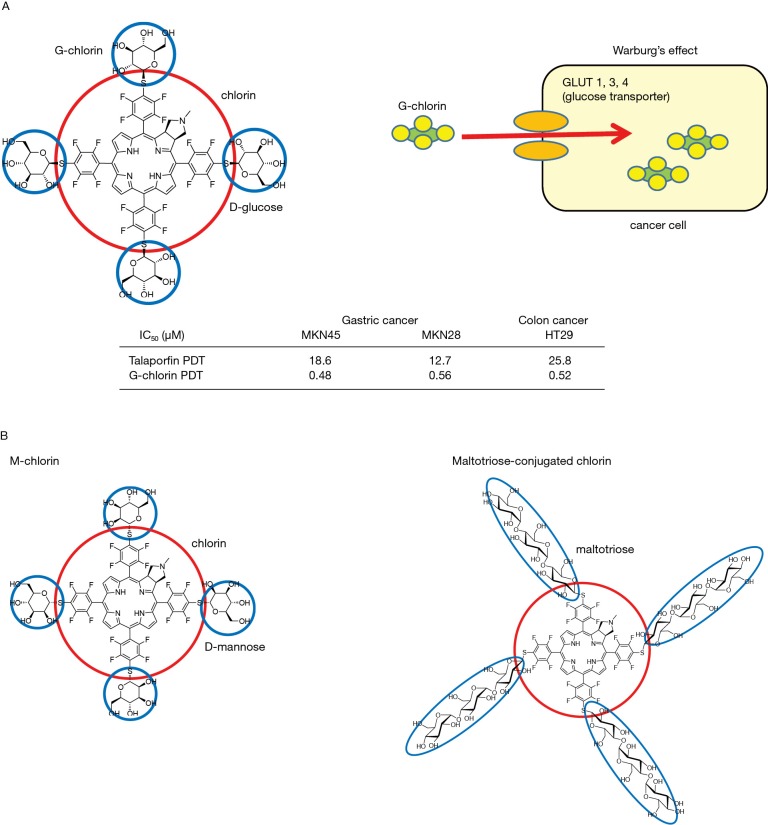Figure 2.
Sugar-conjugated chlorins. (A) G-chlorin is a newly developed PDT photosensitizer that shows very strong antitumor effects. We synthesized a newly developed photosensitizer, G-chlorin, which is composed of chlorin conjugated with four molecules of glucose. By Warburg’s effect, cancer cell may uptake G-chlorin via glucose transporters, GLUT 1, 3 and 4. The lower table shows the PDT effects by talaporfin and G-chlorin against gastric cancer cells and colon cancer cells. As shown here, G-chlorin PDT showed very strong antitumor effects, being 20–50 times more cytotoxic than talaporfin PDT [IC 50: half maximal (50%) inhibitory concentration]; (B) the structure of M-chlorin and maltotriose-conjugated chlorin. We synthesized M-chlorin, which is composed of chlorin conjugated with 4 molecules of D-mannose (left). M-chlorin can target the TAMs as well as cancer cells. We also synthesized maltotriose-conjugated chlorin, which is composed of chlorin conjugated with four molecules of maltotriose (right). Maltotriose-conjugated chlorin has a hydrophilic nature. G-chlorin, glucose-conjugated chlorin; PDT, photodynamic therapy; M-chlorin, mannose-conjugated chlorin; TAMs, tumor-associated macrophages.

